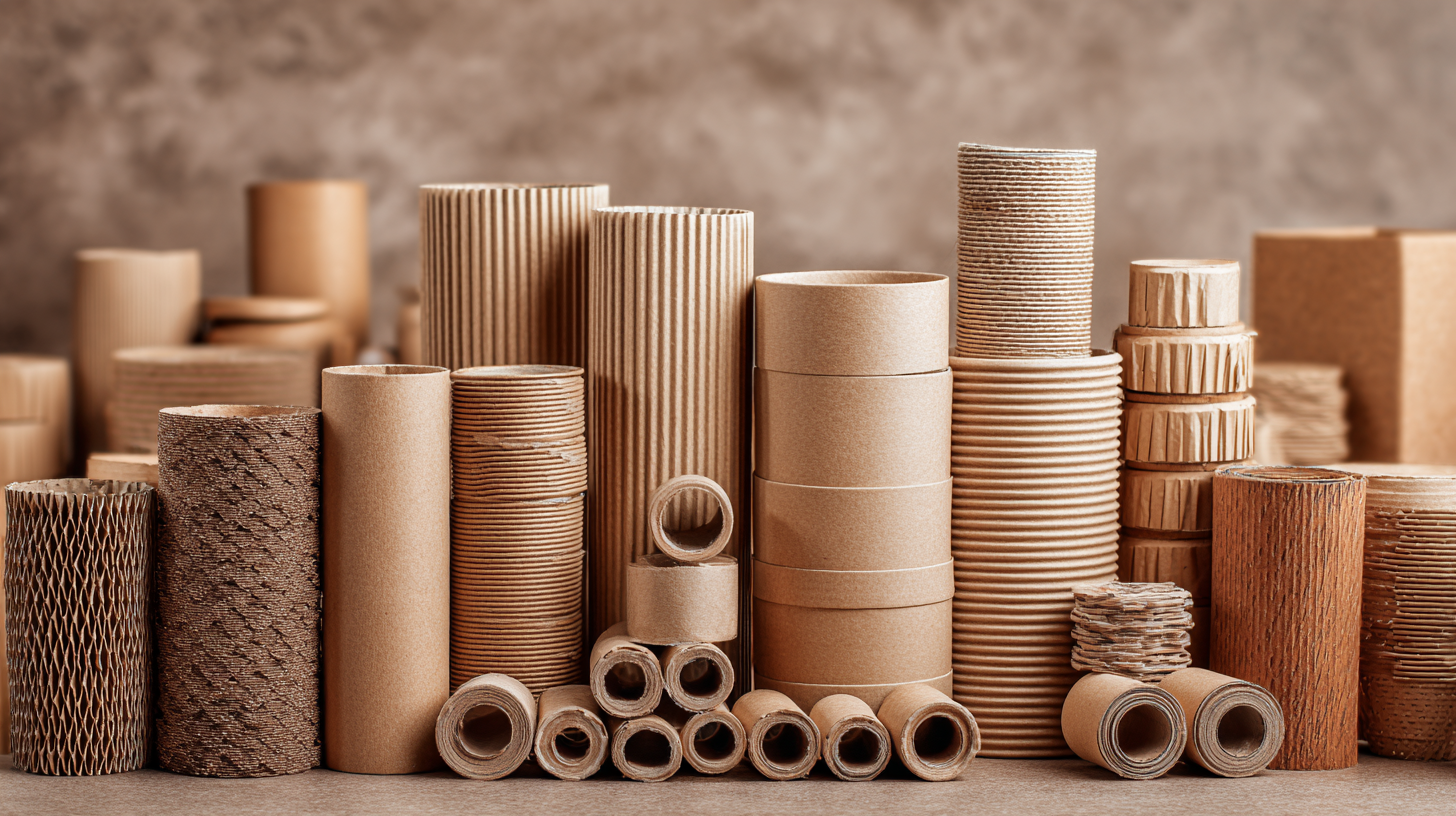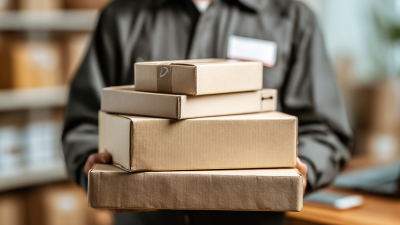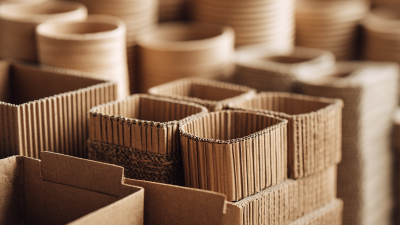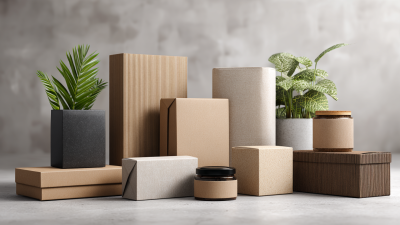As the e-commerce industry continues to grow exponentially, with projections estimating that global online sales will reach $6.4 trillion by 2024, the sustainability of packaging materials has become a pivotal topic for businesses and consumers alike. According to a report by Nielsen, 73% of consumers are willing to change their shopping habits to reduce environmental impact, and packaging plays a crucial role in this shift.

Traditional packaging methods frequently contribute to significant waste and pollution, prompting a reexamination of material choices. Sustainable packaging materials, including biodegradable, recyclable, and reusable options, not only help reduce ecological footprints but also resonate with a growing demographic of environmentally conscious consumers.
This guide aims to explore innovative sustainable packaging solutions and their implementation, empowering businesses to adapt to changing consumer preferences while contributing to a healthier planet.
The eco-friendly e-commerce landscape is reshaping consumer expectations, particularly through the adoption of sustainable packaging materials. The global market for sustainable packaging materials is projected to reach an impressive $351 billion by 2024, with a compound annual growth rate (CAGR) of 7.6% from 2025 to 2034. This growth is fueled by increasing consumer awareness and demand for environmentally friendly products, making sustainable packaging a critical component for businesses looking to align with eco-conscious consumer values.
As brands increasingly incorporate sustainable solutions, the recycled materials packaging market, valued at approximately $189.9 billion, is expected to grow at a CAGR exceeding 5.4% through 2034. The shift towards innovative materials, such as mycelium-based packaging—which forecasts a market value of $84.9 million—underscores a broader trend in e-commerce focusing on reducing environmental impact. The rise of these sustainable materials not only meets consumer demand but also provides businesses with competitive advantages, positioning them favorably in an evolving marketplace that prioritizes ecological responsibility.

As e-commerce continues to grow, the demand for sustainable packaging solutions has become increasingly crucial. The market for biodegradable packaging materials is expanding rapidly, driven by consumer preferences for eco-friendly products. By 2032, the sustainable packaging market is expected to reach significant milestones, influencing online retailers to adopt environmentally responsible alternatives. Among the top options, biodegradable materials such as cornstarch-based plastics, paper, and plant-based polymers stand out for their minimal environmental impact.
In the broader packaging industry, segment analyses reveal notable trends. The global candy packaging market, for example, is projected to grow significantly, potentially reaching substantial valuations by 2033. Key materials in this sector include various grades of plastics, paper, and aluminum, all of which play vital roles in packaging solutions for confectionery items. Furthermore, innovative packaging designs can enhance the unboxing experience for customers, providing an important marketing opportunity for small businesses. By leveraging unique and thoughtful packaging solutions, retailers can capture consumer interest while reducing their ecological footprint.

As the e-commerce industry continues to grow, so does the demand for innovative and sustainable packaging solutions. The market for dual oven trays and containers is projected to reach $1,695.53 million in 2024, with an anticipated increase to $2,272.69 million by 2032, reflecting a compound annual growth rate (CAGR) of 3.73%. This growth is fueled by the rising awareness of environmental issues and the necessity for recyclable materials, making it essential for e-commerce businesses to adopt sustainable packaging practices.
The global market for environmentally-friendly food packaging is expected to expand significantly, with a value projected at $81.54 billion in 2024 and an increase to $122.15 billion by 2032. This sector's growth highlights the shift in consumer preferences towards sustainable options. Additionally, the electronic anti-static film market is forecasted to evolve, driven by applications across consumer electronics and aerospace, indicating the broader trend of integrating sustainable materials across various sectors. Such transitions not only align with consumer demand but also promote an eco-conscious approach within the fast-paced realm of e-commerce.
This chart illustrates the percentage of various sustainable packaging materials used in e-commerce based on recent industry trends. The materials include recycled cardboard, biodegradable plastics, compostable films, and other innovative solutions.
In the quest for sustainability, e-commerce businesses must prioritize
packaging materials that minimize environmental impact while remaining
cost-effective. Implementing sustainable packaging solutions can seem daunting, but with the right strategies,
it can also be financially viable.
One effective way to cut costs is to source materials locally.
This reduces transportation expenses and carbon emissions, supporting local economies in the process. Additionally,
consider opting for biodegradable or
recyclable materials that may qualify for tax breaks or incentives,
encouraging a win-win scenario.
Tips: Look into bulk purchasing of sustainable materials to lower costs.
Partner with eco-friendly suppliers who may offer discounts for long-term
relationships. Finally, educate your team about the importance of sustainable practices, fostering a culture of
environmental responsibility that can lead to innovative solutions and potential
savings throughout your operations.
As consumer demand for sustainable practices rises, educating customers on the benefits of eco-friendly packaging has become essential for brands. Highlighting environmental advantages and the positive impact on health can resonate deeply with today’s eco-conscious buyers. When promoting sustainable packaging, emphasize that these materials often reduce waste and lower carbon footprints, making them a responsible choice for bettering the planet.
**Tips:** Use clear messaging to communicate how eco-friendly packaging reduces overall waste and supports a circular economy. Engaging visuals can also help convey sustainability concepts more effectively, making it easier for customers to connect with your brand’s mission.
Brands can also bolster their strategies by sharing behind-the-scenes processes that illustrate their commitment to sustainability. For instance, discussions about the lifecycle of packaging materials can educate customers, enhancing their understanding and appreciation of eco-friendly choices.
**Tips:** Consider creating informative content like blog posts or infographics that showcase the journey of your eco-friendly packaging from production to disposal. This transparency fosters trust and aligns customer values with your brand ethos.
| Packaging Material | Sustainability Rating (1-5) | Benefits | Customer Education Methods |
|---|---|---|---|
| Biodegradable Plastics | 4 | Breaks down naturally, reduces landfill waste. | Social media campaigns, informative blog posts. |
| Recycled Paper | 5 | Made from reused materials, sustainable source. | Webinars, packaging labels with QR codes. |
| Cornstarch Packaging | 4 | Compostable, reduces plastic use. | Videos demonstrating impact, customer newsletters. |
| Mushroom Packaging | 5 | Natural, renewable resource, fully compostable. | Interactive infographics, sustainability impact reports. |
| Glass Containers | 5 | Recyclable, reusable, inert and safe for food storage. | Eco-friendly workshops, transparent sustainability practices. |






Get Free Estimate!

